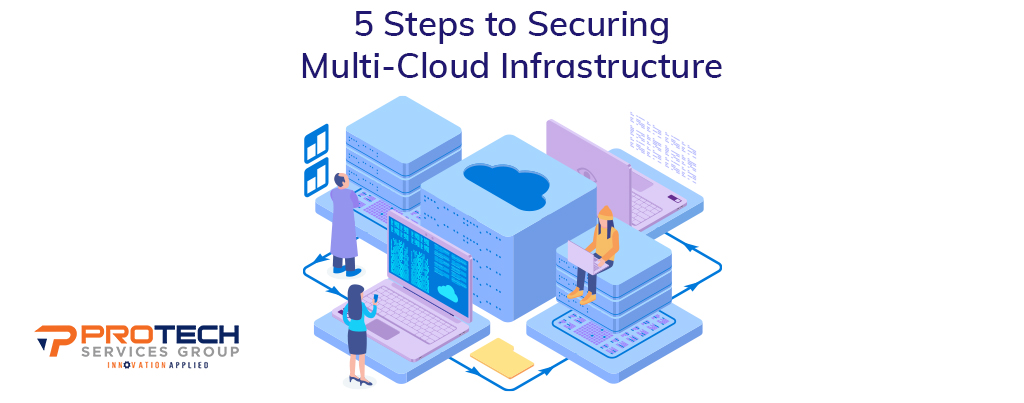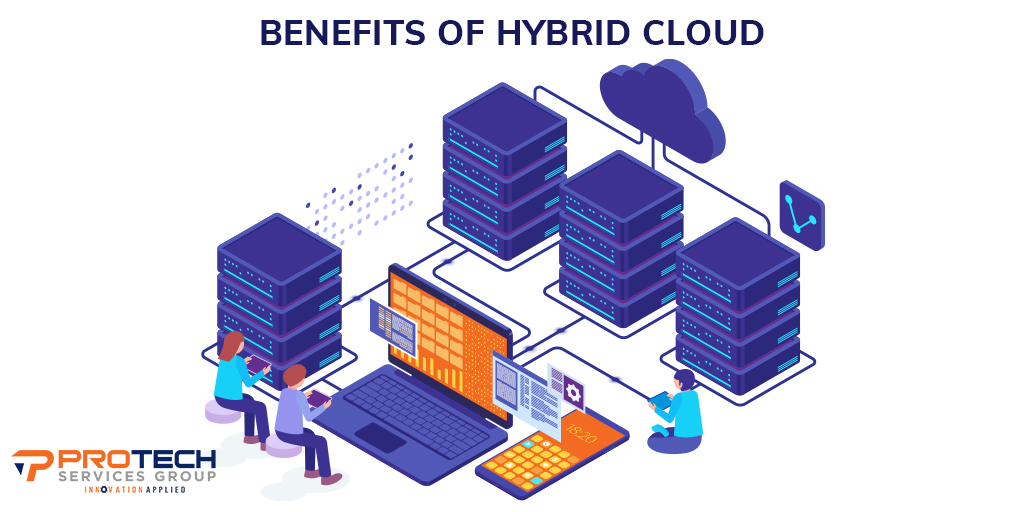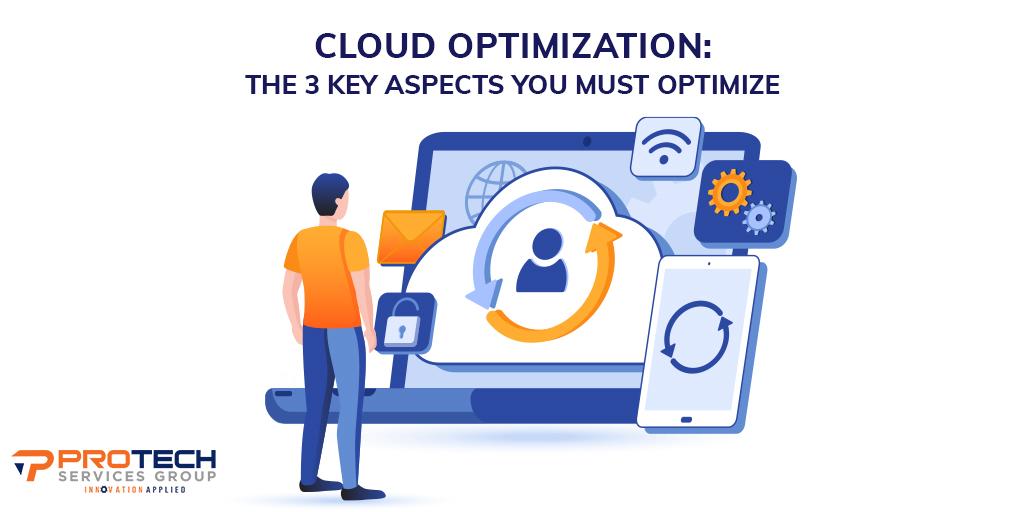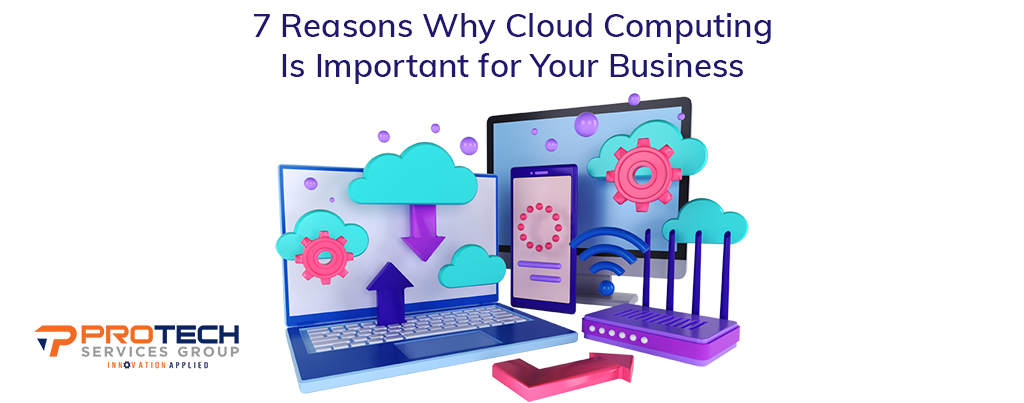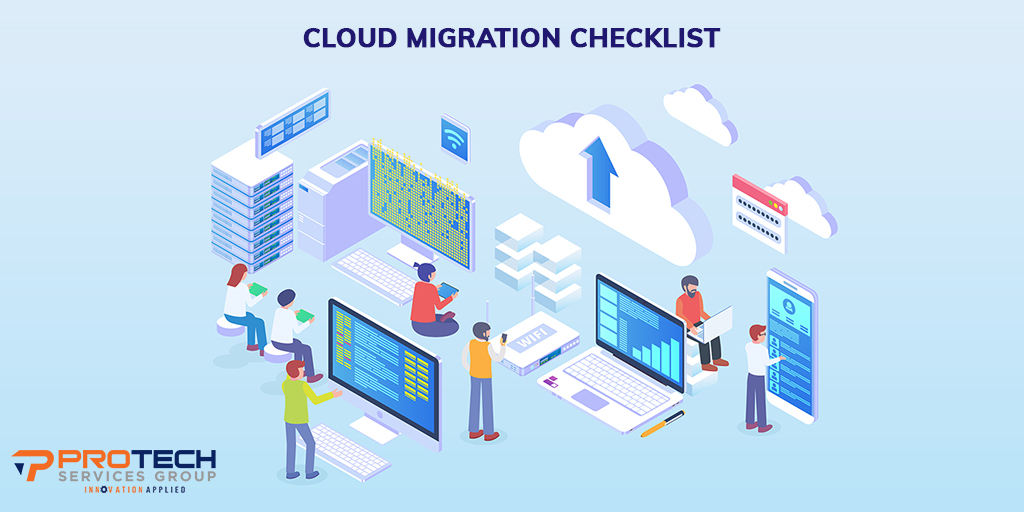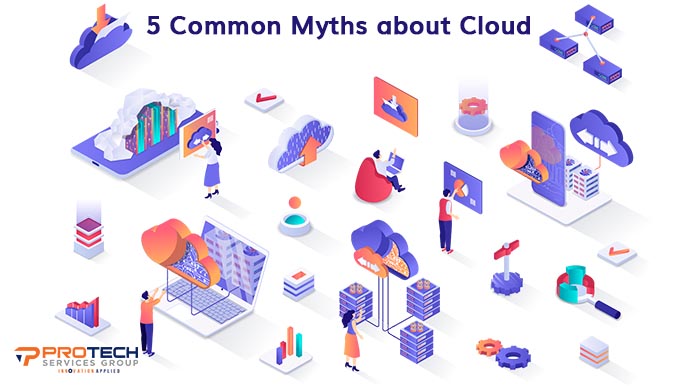What is Multi Cloud Security?
Multi-cloud security refers to the measures and strategies put in place to protect an organization’s data and applications that are spread across multiple cloud service providers. In a multi-cloud environment, organizations use multi-cloud providers to distribute their data and applications to take advantage of each provider’s unique features and capabilities. Multi-cloud security involves ensuring that all the cloud providers’ security policies and procedures meet the organization’s security requirements, implementing strong access controls, encrypting data both at rest and in transit, regularly monitoring the cloud environment for suspicious activity, and having a disaster recovery plan in place to recovery to recover data and applications in the event of a security breach or disaster. The goal of multi-cloud security is to ensure that an organization’s data and applications are secure, regardless of which cloud provider they reside in.

What are the Benefits of Multi-Cloud Strategy?
A multi-cloud strategy involves using multiple cloud service providers to distribute an organization’s data and applications. There are several benefits to using a multi-cloud strategy. First, it allows organizations to take advantage of each cloud provider’s unique features and capabilities, providing flexibility and agility in their operations. Secondly, a multi-cloud strategy reduces the risk of vendor lock-in, where organizations become dependent on a single cloud provider, which can limit their flexibility and bargaining power. Thirdly, a multi-cloud strategy increases resilience and reliability by distributing data and applications across multiple cloud providers, reducing the impact of downtime or outages. Finally, a multi-cloud strategy can also result in cost savings, as organizations can choose the most cost-effective cloud provider for each workload or application. Overall, a multi-cloud strategy provides organizations with greater flexibility, resilience, and cost-effectiveness.
Five Steps to Improve your Multi-Cloud Security
Improving your multi-cloud security is essential to protect your organization’s data and applications from potential security threats. Here are five steps that you can take to improve your multi-cloud strategy:
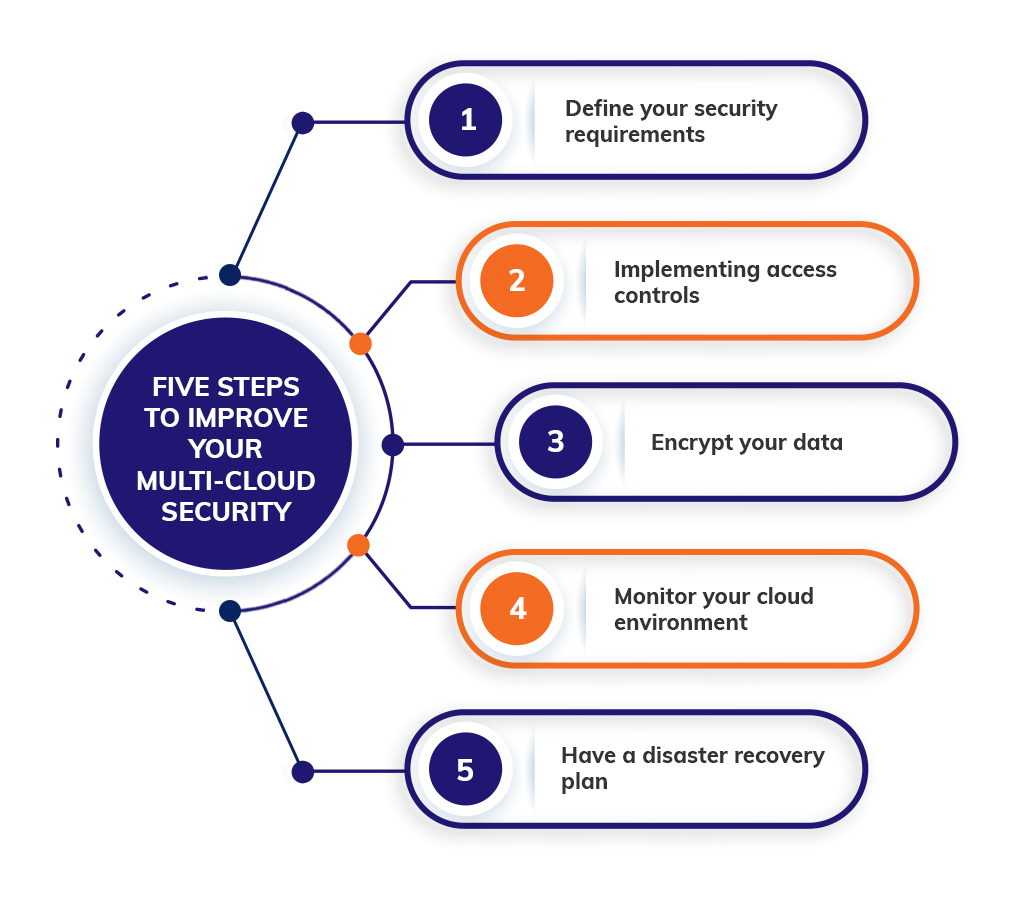
- Define your security requirements: Before you start securing your multi-cloud infrastructure, it is essential to define your security requirements. Identify the types of data and applications that will be stored in the cloud, and determine the level of security required for each.
- Implementing access controls: Access controls are critical to securing multi-cloud infrastructure. Ensure that only authorized users and devices can access your cloud resources. Implement strong authentication mechanisms such as multifactor authentication and role-based access controls.
- Encrypt your data: Encryption is essential to secure your data in the cloud. Ensure that your data is encrypted both at rest and in transit. Encryption ensures that even if your data is intercepted, it cannot be read without the decryption key.
- Monitor your cloud environment: Regularly monitor your multi-cloud infrastructure for suspicious activity such as unauthorized access attempts, unusual login patterns, and unusual data transfers. Also, monitor your cloud service providers’ security practices and ensure that they meet your security requirements.
- Have a disaster recovery plan: A disaster recovery plan is crucial for any organization that relies on cloud infrastructure. Have a plan in place for recovering your data and applications in the event of a security breach or other disaster. Your disaster recovery plan should include backups of your data, a plan for restoring your applications, and a clear process for communicating with your stakeholders in the event of a disaster.
By taking these steps, you can ensure that your multi-cloud infrastructure is secure and protected from potential security threats.
Protech Services
We are a leading provider of IT services and solutions for businesses of all sizes. We offer a wide range of services, including cloud computing, cybersecurity, managed IT services, IT consulting, and software development. Our team of highly skilled and experienced IT professionals are committed to providing exceptional services to our clients. We use the latest technologies and tools to deliver high-quality services that are tailored to meet the unique needs of each client. We are a reliable and trusted partner for businesses looking to leverage the power of technology to drive growth and success.
Your Trusted Partner for Cloud Migration
Cloud migration can be a complex process that requires careful planning, execution, and management to ensure a successful outcome. That’s why it’s crucial to partner with a reliable and experienced provider who can guide you through every step of the migration journey. Protech is your trusted partner for cloud migration, offering a wide range of services that help you migrate your applications and data to the cloud seamlessly. Our team of experts has extensive experience in cloud migration and can help you assess your current environment, develop a migration strategy, and execute the migration with minimal disruption to your operations. We use a proven methodology that ensures smooth and successful migrations, from planning and assessment to migration and post-migration support. With our cloud migration services, you can leverage the benefits of the cloud, including increased scalability, flexibility, and cost savings, while minimizing the risk and challenges of migration.
Conclusion
Securing multi-cloud infrastructure is crucial for organizations that store their data and applications in the cloud. In this article, we discussed the five essential steps that organizations can take to improve their multi-cloud strategy. By following these steps, organizations can enhance their multi-cloud security and protect their data and applications from potential security threats. The key to securing multi-cloud infrastructure is to ensure that all the cloud providers’ security policies and procedures meet the organization’s security requirements, and the organization has implemented strong access controls, encryption, monitoring, and disaster recovery measures. With a robust multi-cloud strategy in place, organizations can leverage the power of the cloud while mitigating the risks and challenges of cloud computing.

